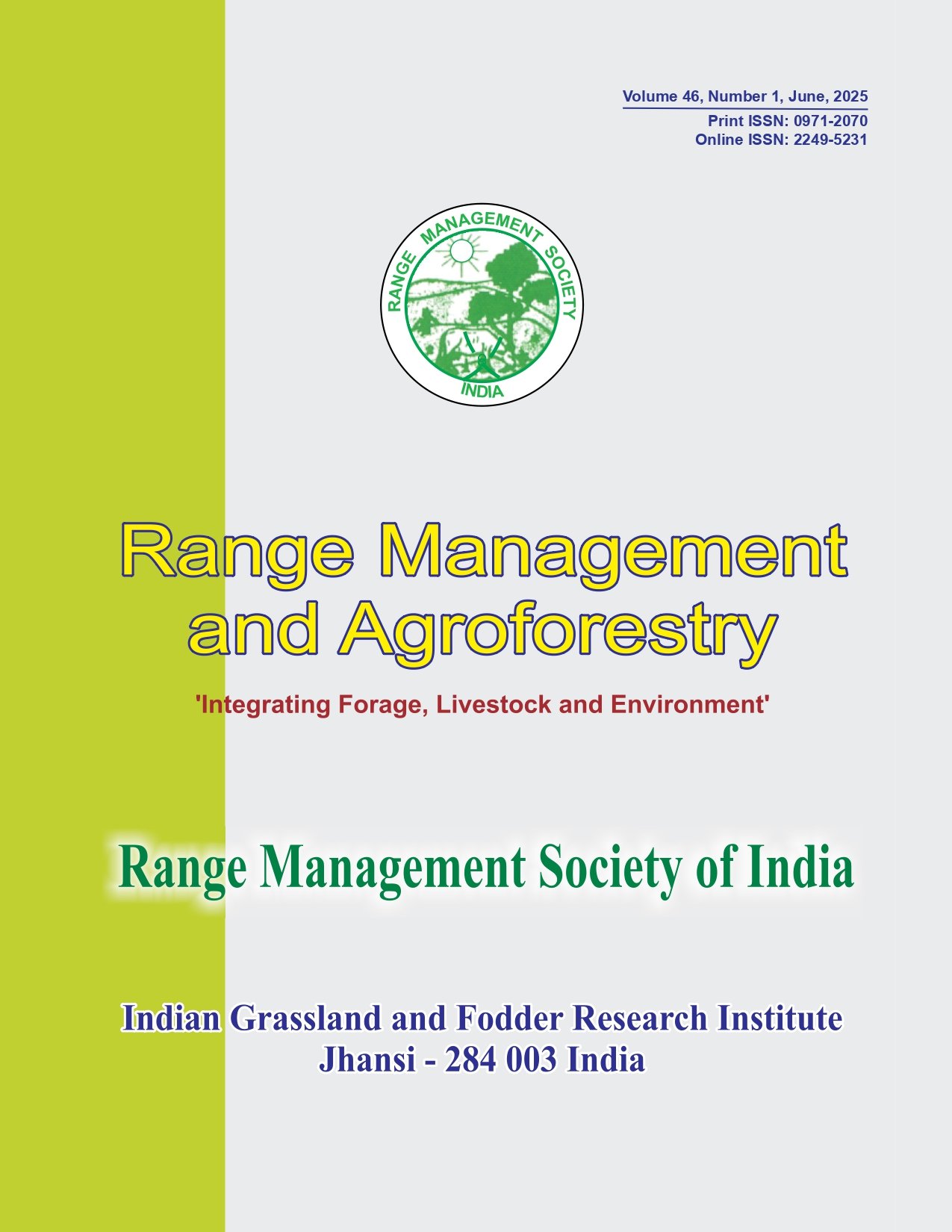Effects of selective tree species on phytosociology and production of understorey vegetation in mid-Himalayan region of Himachal Pradesh
Keywords:
Basal area, Biomass, Carbon density, Vegetation densityAbstract
Characteristic of ground vegetation in Pinus roxburghii, Acacia mollissima, Quercus leucotricophora, Eucalyptus tereticornis, Ulmus villosa and mixed forest plantations were compared with grassland in mid-Himalayan region. Herbage density, basal area and biomass (aboveground and belowground) increased gradually from June till August in all systems. Maximum herbage density (1597 tillers/m2 ), basal area (63.10 cm2 /m2 ), aboveground (3.61 t/ha) and belowground (4.03 t/ha) biomass was recorded in grassland in the month of August. There was 33.24% (Pinus roxburghii) to 71.19% (U. villosa) decrease in peak aboveground biomass of herbage under trees as compared to grassland. Further, aboveground biomass of herbage under trees accounted for only 0.75% (U. villosa) to 2.47% (Pinus roxburghii) of total aboveground biomass of vegetation in plantations. Total (herb + shrub + tree) biomass (191.30 t/ha), carbon density of vegetation (86.21 t/ha) and soil (49.13 t/ha) was highest in U. villosa plantation. Carbon density (vegetation + soil) in systems decreased in the order: U. villosa (135.34 t/ha) > Mixed forest (97.63 t/ha) > E. tereticornis (96.51 t/ha) > A. mollissima (88.37 t/ha) > Q. leucotricophora (86.72 t/ha) > P. roxburghii (85.94 t/ha) > grassland (45.61 t/ha).




